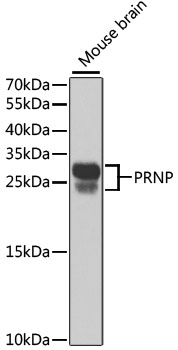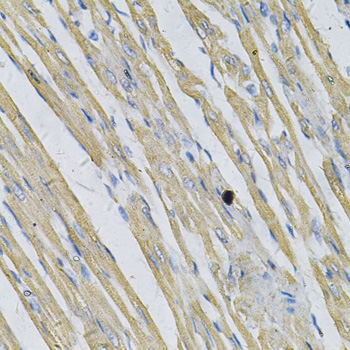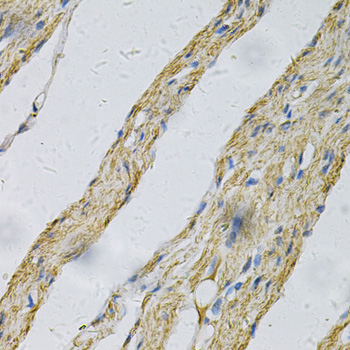-
Product Name
PRNP Polyclonal Antibody
- Documents
-
Description
Polyclonal antibody to PRNP
-
Tested applications
WB, IHC
-
Species reactivity
Human, Mouse, Rat
-
Alternative names
PRNP antibody; ASCR antibody; AltPrP antibody; CD230 antibody; CJD antibody; GSS antibody; KURU antibody; PRIP antibody; PrP antibody; PrP27-30 antibody; PrP33-35C antibody; PrPc antibody; p27-30 antibody; prion protein antibody
-
Isotype
Rabbit IgG
-
Preparation
Antigen: Recombinant fusion protein containing a sequence corresponding to amino acids 23-230 of human PRNP (NP_001073592.1).
-
Clonality
Polyclonal
-
Formulation
PBS with 0.02% sodium azide, 50% glycerol, pH7.3.
-
Storage instructions
Store at -20℃. Avoid freeze / thaw cycles.
-
Applications
WB 1:500 - 1:2000
IHC 1:50 - 1:200 -
Validations

Western blot - PRNP Polyclonal Antibody
Western blot analysis of extracts of mouse brain, using PRNP antibody at 1:1000 dilution.Secondary antibody: HRP Goat Anti-Rabbit IgG (H+L) at 1:10000 dilution.Lysates/proteins: 25ug per lane.Blocking buffer: 3% nonfat dry milk in TBST.Detection: ECL Basic Kit .Exposure time: 5s.

Immunohistochemistry - PRNP Polyclonal Antibody
Immunohistochemistry of paraffin-embedded rat heart using PRNP Antibody at dilution of 1:100 (40x lens).

Immunohistochemistry - PRNP Polyclonal Antibody
Immunohistochemistry of paraffin-embedded human smooth muscle using PRNP Antibody at dilution of 1:100 (40x lens).
-
Background
Its primary physiological function is unclear. May play a role in neuronal development and synaptic plasticity. May be required for neuronal myelin sheath maintenance. May promote myelin homeostasis through acting as an agonist for ADGRG6 receptor. May play a role in iron uptake and iron homeostasis. Soluble oligomers are toxic to cultured neuroblastoma cells and induce apoptosis (in vitro) (By similarity). Association with GPC1 (via its heparan sulfate chains) targets PRNP to lipid rafts. Also provides Cu(2+) or ZN(2+) for the ascorbate-mediated GPC1 deaminase degradation of its heparan sulfate side chains (By similarity).
Related Products / Services
Please note: All products are "FOR RESEARCH USE ONLY AND ARE NOT INTENDED FOR DIAGNOSTIC OR THERAPEUTIC USE"
